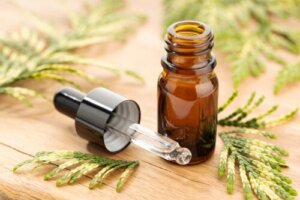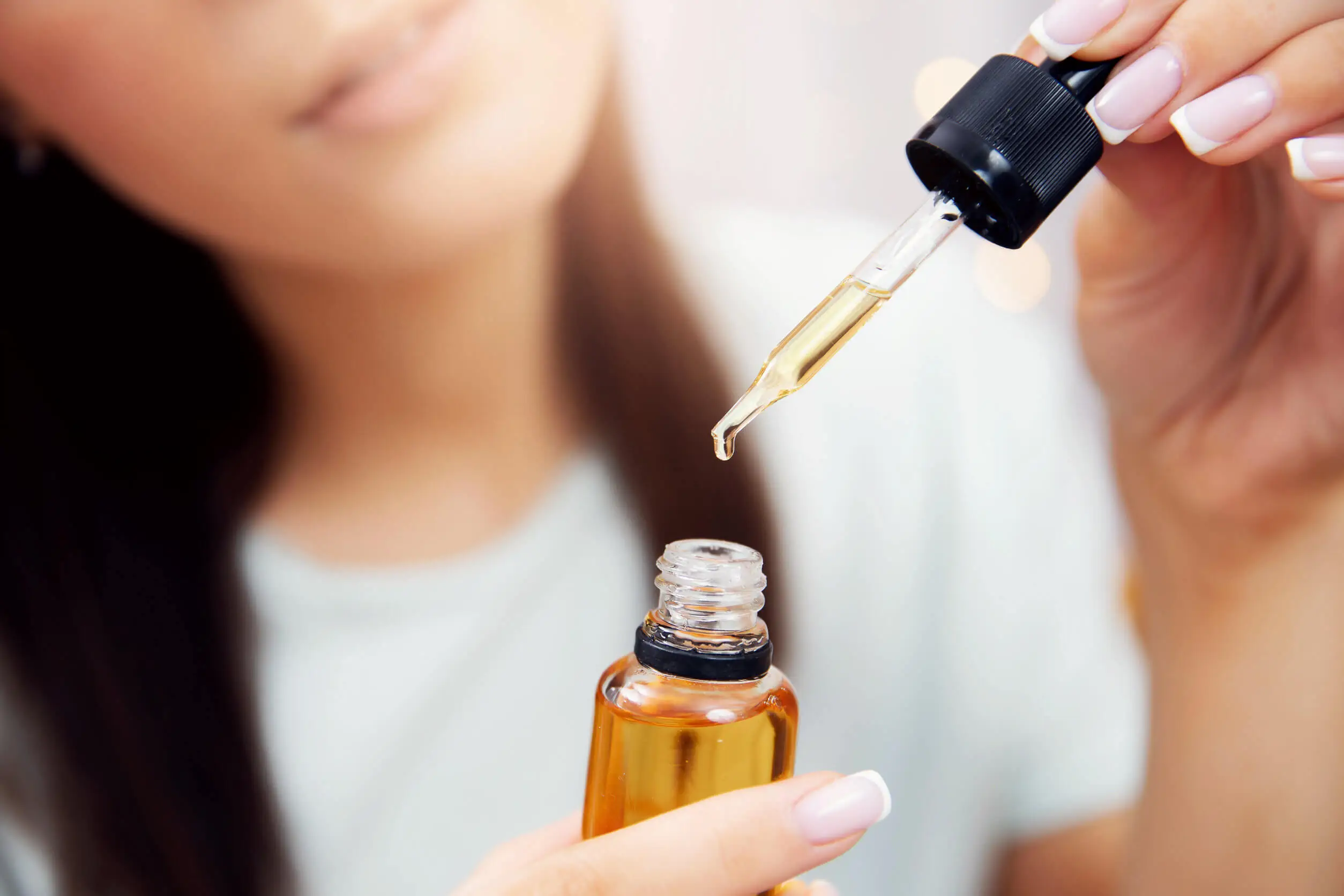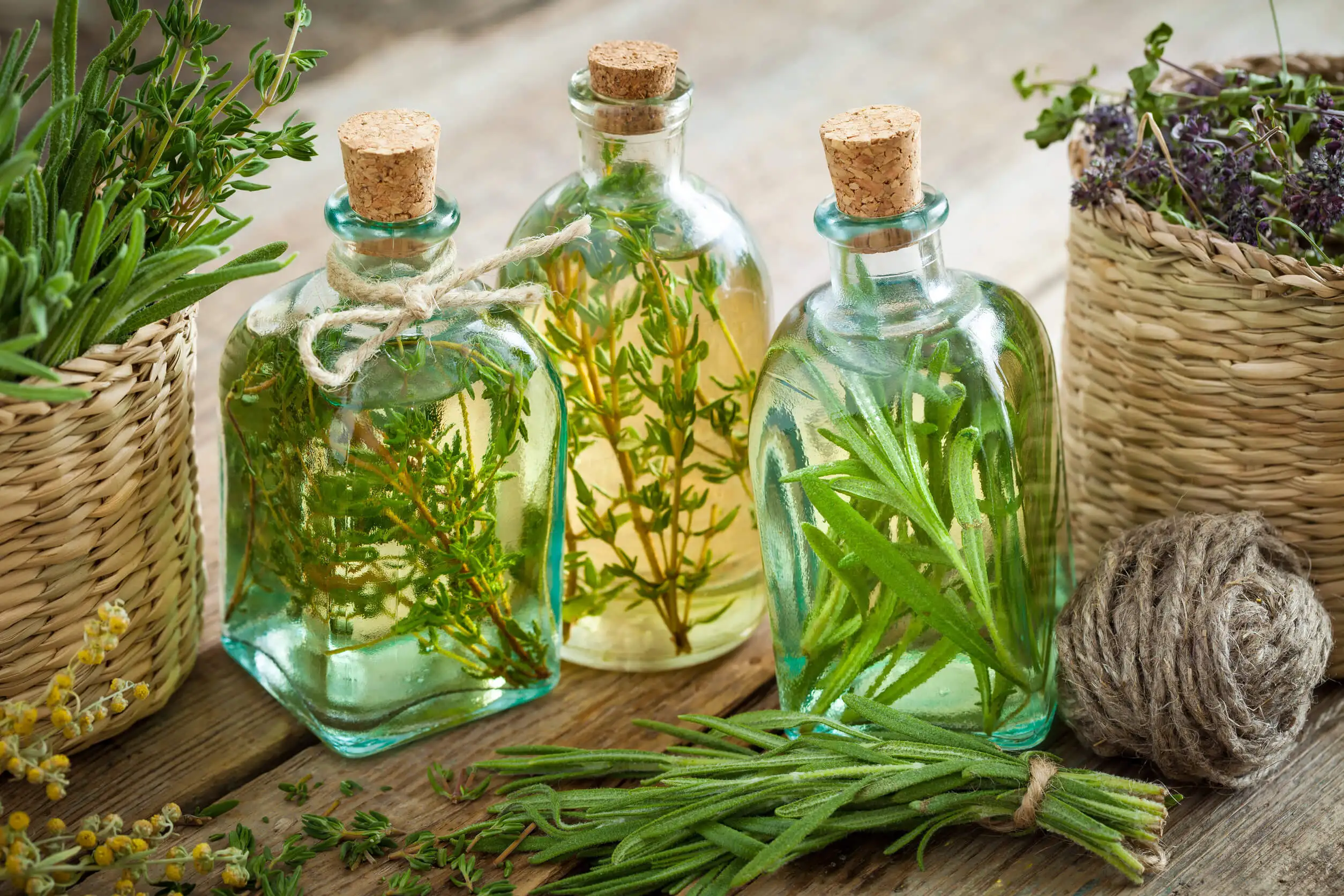What Are Essential Oils and How and Why Do They Work?


Reviewed and approved by the pharmacist Franciele Rohor de Souza
Have you ever wondered what essential oils are? Since ancient times, essential oils have been present in many cultures around the world. There are records that suggest their application in ancient Egypt, so it’s estimated that they’ve been used since 3,500 years B.C.
In general, they’re valued for their aromatic power and their interesting medicinal properties. Due to their composition, they’re often used as adjuvants to reduce stress, soothe ailments, and reduce the risk of infections, among other things.
Of course, like many natural products, you should use them with caution and in moderation. While it’s true that their properties benefit health, they’re not free of contraindications and unwanted effects. In the following article, we’ll tell you what they’re used for and which are the most recommended.
What are essential oils?
It’s likely that you’ve wondered what essential oils are. These ingredients have been used in natural medicine for thousands of years. In particular, they’re volatile essences that are extracted from aromatic trees and plants through a process of distillation or cold pressing.
They shouldn’t be confused with commercial oils that are obtained through chemical methods, as their composition is different. Often, the pure essential oil is combined with a carrier oil to make it suitable for use.
As discussed in an article reported in Evidence-Based Complementary and Alternative Medicine, essential oils are often used as disinfectant allies and stimulants. They have also been found to act as anti-inflammatories, analgesics, antimicrobials, and pain relievers.
We think you may also enjoy reading this article: Bergamot Essential Oil: Benefits and Possible Side Effects
How and why do essential oils work?
Essential oils are not suitable for consumption; their properties are used through inhalation or applied topically (combined with a carrier oil). According to research shared in the International Journal of Molecular Sciences, three possible mechanisms explain their effects.
The first involves the activation of nasal olfactory chemoreceptors which then send olfactory signals to the brain. Specifically, they effects the limbic system this way, which is a brain region involved in the regulation of emotions, behaviors, and long-term memory.
The other two possible mechanisms involve the direct penetration of their molecules through the olfactory nerve into brain areas and the alveolar absorption of their compounds into the bloodstream, which appear to cross the blood-brain barrier to generate the stimulus.
However, when applied to the skin, phytochemicals that are beneficial to health are absorbed. In this regard, research in Pharmazie states that there’s no doubt that the components of oils can penetrate human skin.

The main properties of essential oils
The effects of essential oils vary depending on the plant of origin and the extraction process used during their production. However, on a general level, they’re characterized by the following properties:
- Antiviral
- Antibiotic
- Antimicrobial
- Anti-inflammatory
- Regenerating and healing
- Antioxidants
- Adaptogenic
- Sedative
In most cases, these effects are exploited in aromatherapy sessions. Inhalation of the products stimulates respiration, cell regeneration, the nervous system, and blood circulation. Thus, it generates a feeling of physical and mental well-being.
The most commonly used essential oils
It’s estimated that there are more than 90 varieties of essential oils. Most of them are used in aromatherapy, but also in cosmetics and in the food industry.
Here are the most commonly used and their general properties:
- Peppermint: According to information in Alimentary Pharmacology & Therapeutics, this oil relaxes smooth muscle and has antimicrobial, anti-inflammatory, and digestive qualities.
- Thyme: This is characterized by its antimicrobial, antiviral, and expectorant potential.
- Lavender is one of the essential oils used in the treatment of stress and anxiety. It’s also linked to the relief of physical pain.
- Oregano: Molecules magazine details that it has anti-diabetic, antimicrobial, anti-inflammatory, and antioxidant potential.
- Eucalyptus: This is often used as an adjuvant against respiratory diseases. It’s also ideal for disinfecting.
- Camphor: In folk medicine, camphor is used to soothe irritation and pain. Evidence supports its anti-inflammatory, insecticidal and antiviral properties.
- Basil exhibits anti-inflammatory and antioxidant activity according to an article reported in the Journal of Food Science and Technology.
- Sandalwood: Although this can be used to regulate the nervous system, it also has potential as an ally in dermatology.
- Bergamot: Evidence suggests that it contributes to the relief of stress and anxiety.
- Rose is considered antidepressant, relaxing, and a sexual stimulant. It’s also beneficial for skin health.
- Chamomile improves mood and contributes to skincare.
- Ylang-Ylang can be used to treat headaches, reduce blood pressure, and strengthen the immune system.
- Tea tree is one of the most popular for the prevention and treatment of various types of skin infections.
- Jasmine: This can be used to stimulate libido, promote a sense of calm, and improve mood.
- Lemon contributes to the prevention of infections. It’s also believed to aid digestion and the nervous system.
Recommendations for choosing essential oils
There are several aspects to consider when purchasing essential oils. Right now, many stores sell various presentations that are not always of the best quality.
Some are not pure and come mixed with other oils. And while they may have pleasant aromas, they don’tt produce the desired effects.
Therefore, it’s worth bearing in mind the following:
- Choose high purity oils: They usually have the botanical name of the plant on the label. They don’t contain any additives.
- Verify the extraction process: Is it distillation or cold pressing? If it involves other procedures, the essential oil is probably not pure.
- Choose a trusted brand: Some have a long history as manufacturers.

The risks and side effects of essential oils
Just because a product is natural does not mean it’s safe.
Essential oils are no exception. In fact, misuse can lead to various side effects ranging from mild to serious. The most common are the following:
- Eruptions
- Photosensitivity
- Headaches
- Breathing difficulties
As with their beneficial properties, these reactions vary according to the composition of each type of oil. In any case, caution is recommended in special cases:
- Infants and children
- Pregnancy and lactation
- Renal, hepatic, or cardiac insufficiency
- People undergoing pharmacological treatments
The above cases should first be consulted with the doctor. The professional will determine if their use is safe or if they pose any risk. They can also provide guidance on how to use them.
Like this article? You may also like to read: The Incredible Benefits of Frankincense Essential Oil
How to use them safely
The most common way to use essential oils is through diffusers. These dissipate the aromas and allow you to enjoy a pleasant experience. Some people also add them to hot water to inhale the vapors and obtain similar effects.
Their topical use is more delicate. It’s essential to combine a few drops of the oil (5 or 6) with a spoonful of carrier oil (15 ml), which can be coconut, almond, avocado, or olive oil. This is applied through massages on various parts of the body.
However, be careful in case of oily or acne-prone skin, as the application of comedogenic oils can worsen it. Another alternative way is to add a few drops in the bathtub or in preparations for applying compresses.
It’s always a good iea to do a patch test to rule out possible reactions. To do this, apply a small amount of the productto an area of the skin and leave it to act for 6 to 12 hours. If there’s no irritation or discomfort, it can be used without any problem.
Finally, 3 to 5 drops of the chosen oil can be added to shampoo, bath gels, lotions, and other regular care products. Of course, it’s always first necessary to find out if they’re compatible.
What is there to remember about these products?
There’s a wide variety of essential oils on the market with interesting properties. Most are used in aromatherapy to promote relaxation, reduce stress, and soothe certain ailments. However, they can have other positive effects on the nervous, cardiovascular, and circulatory systems.
However, it’s important to use them with caution, as they can have undesirable effects when used in excessive amounts or under certain conditions. In this regard, it’s advisable to read the labels and follow the manufacturer’s recommendations.
All cited sources were thoroughly reviewed by our team to ensure their quality, reliability, currency, and validity. The bibliography of this article was considered reliable and of academic or scientific accuracy.
- Firenzuoli, Fabio et al. “Essential oils: new perspectives in human health and wellness.” Evidence-based complementary and alternative medicine : eCAM vol. 2014 (2014): 467363. doi:10.1155/2014/467363
- Fung TKH, Lau BWM, Ngai SPC, Tsang HWH. Therapeutic Effect and Mechanisms of Essential Oils in Mood Disorders: Interaction between the Nervous and Respiratory Systems. Int J Mol Sci. 2021;22(9):4844. Published 2021 May 3. doi:10.3390/ijms22094844
-
Herman A, Herman AP. Essential oils and their constituents as skin penetration enhancer for transdermal drug delivery: a review. J Pharm Pharmacol. 2015 Apr;67(4):473-85. doi: 10.1111/jphp.12334. Epub 2014 Dec 31. PMID: 25557808.
- Schmitt S, Schaefer U, Sporer F, Reichling J. Comparative study on the in vitro human skin permeation of monoterpenes and phenylpropanoids applied in rose oil and in form of neat single compounds. Pharmazie. 2010 Feb;65(2):102-5. PMID: 20225652.
- Ramsey JT, Shropshire BC, Nagy TR, Chambers KD, Li Y, Korach KS. Essential Oils and Health. Yale J Biol Med. 2020 Jun 29;93(2):291-305. PMID: 32607090; PMCID: PMC7309671.
- de Groot AC, Schmidt E. Essential Oils, Part I: Introduction. Dermatitis. 2016 Mar-Apr;27(2):39-42. doi: 10.1097/DER.0000000000000175. PMID: 26983089.
- Chumpitazi BP, Kearns GL, Shulman RJ. Review article: the physiological effects and safety of peppermint oil and its efficacy in irritable bowel syndrome and other functional disorders. Aliment Pharmacol Ther. 2018;47(6):738-752. doi:10.1111/apt.14519
- Kowalczyk, Adam et al. “Thymol and Thyme Essential Oil-New Insights into Selected Therapeutic Applications.” Molecules (Basel, Switzerland) vol. 25,18 4125. 9 Sep. 2020, doi:10.3390/molecules25184125
- Koulivand, Peir Hossein et al. “Lavender and the nervous system.” Evidence-based complementary and alternative medicine : eCAM vol. 2013 (2013): 681304. doi:10.1155/2013/681304
- Leyva-López, Nayely et al. “Essential Oils of Oregano: Biological Activity beyond Their Antimicrobial Properties.” Molecules (Basel, Switzerland) vol. 22,6 989. 14 Jun. 2017, doi:10.3390/molecules22060989
- Jun YS, Kang P, Min SS, Lee JM, Kim HK, Seol GH. Effect of eucalyptus oil inhalation on pain and inflammatory responses after total knee replacement: a randomized clinical trial. Evid Based Complement Alternat Med. 2013;2013:502727. doi:10.1155/2013/502727
-
Chen W, Vermaak I, Viljoen A. Camphor–a fumigant during the Black Death and a coveted fragrant wood in ancient Egypt and Babylon–a review. Molecules. 2013 May 10;18(5):5434-54. doi: 10.3390/molecules18055434. PMID: 23666009; PMCID: PMC6270224.
- Li H, Ge Y, Luo Z, et al. Evaluation of the chemical composition, antioxidant and anti-inflammatory activities of distillate and residue fractions of sweet basil essential oil. J Food Sci Technol. 2017;54(7):1882-1890. doi:10.1007/s13197-017-2620-x
- Moy RL, Levenson C. Sandalwood Album Oil as a Botanical Therapeutic in Dermatology. J Clin Aesthet Dermatol. 2017;10(10):34-39.
-
Watanabe E, Kuchta K, Kimura M, Rauwald HW, Kamei T, Imanishi J. Effects of bergamot ( Citrus bergamia (Risso) Wright & Arn.) essential oil aromatherapy on mood states, parasympathetic nervous system activity, and salivary cortisol levels in 41 healthy females. Forsch Komplementmed. 2015;22(1):43-9. doi: 10.1159/000380989. Epub 2015 Feb 19. PMID: 25824404.
- Mohebitabar, Safieh et al. “Therapeutic efficacy of rose oil: A comprehensive review of clinical evidence.” Avicenna journal of phytomedicine vol. 7,3 (2017): 206-213.
- Srivastava JK, Shankar E, Gupta S. Chamomile: A herbal medicine of the past with bright future. Mol Med Rep. 2010;3(6):895-901. doi:10.3892/mmr.2010.377
- Tan, Loh Teng Hern et al. “Traditional Uses, Phytochemistry, and Bioactivities of Cananga odorata (Ylang-Ylang).” Evidence-based complementary and alternative medicine : eCAM vol. 2015 (2015): 896314. doi:10.1155/2015/896314
- Carson CF, Hammer KA, Riley TV. Melaleuca alternifolia (Tea Tree) oil: a review of antimicrobial and other medicinal properties. Clin Microbiol Rev. 2006;19(1):50-62. doi:10.1128/CMR.19.1.50-62.2006
- Hongratanaworakit T. Stimulating effect of aromatherapy massage with jasmine oil. Nat Prod Commun. 2010 Jan;5(1):157-62. PMID: 20184043.
- Ben Hsouna A, Ben Halima N, Smaoui S, Hamdi N. Citrus lemon essential oil: chemical composition, antioxidant and antimicrobial activities with its preservative effect against Listeria monocytogenes inoculated in minced beef meat. Lipids Health Dis. 2017;16(1):146. Published 2017 Aug 3. doi:10.1186/s12944-017-0487-5
- Hammer KA, Carson CF, Riley TV, Nielsen JB. A review of the toxicity of Melaleuca alternifolia (tea tree) oil. Food Chem Toxicol. 2006 May;44(5):616-25. doi: 10.1016/j.fct.2005.09.001. Epub 2005 Oct 21. PMID: 16243420.
This text is provided for informational purposes only and does not replace consultation with a professional. If in doubt, consult your specialist.








